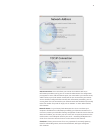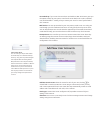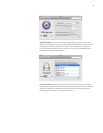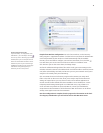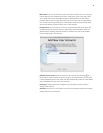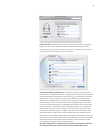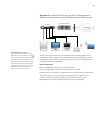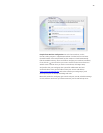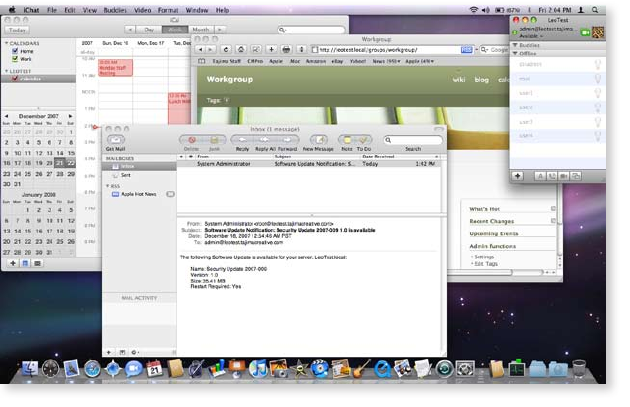
25
The Client Experience
Once your server is up and running, it’s easy to get Mac clients connected and
more productive.
If you recall, we walked through simple steps for using Directory Utility to congure
each of your client Macs for each scenario.
Once set up, the client Macs are ready to go. When a user connects to their workgroup
server, Leopard Server will communicate with Mac OS X on the client’s system to
congure Address Book, iCal, Mail, iChat, and more — allowing new users to get started
immediately on their work. No need to congure dierent applications to get started.
Send and receive email right away with the account automatically set up in Mail. Get
quick access to shared contents in Address Book and keep clients in the loop with
instant iCal updates. See coworkers in meetings, or right online. iChat will have everyone
listed as a buddy, right from launch.
Clients can check mail, sync schedules, chat away, post to wikis and blogs. It’s all there
waiting for them. So the collaboration can start immediately. Bring them right into the
fold, no waiting required.
Next Steps
Now that you’ve gotten started with Mac OS X Server, you may nd that you want to
go beyond the basics. A more in-depth printed Getting Started guide is included with
every copy of Mac OS X Server and with every Mac that comes with Mac OS X Server
pre-installed. Also, comprehensive documentation of all the features of Mac OS X Server
can be found at http://www.apple.com/server/documentation.
Mac OS X Server version 10.5 Leopard combines Apple’s legendary ease of use with
a rock-solid UNIX® operating system and enables even non-technical individuals to
set up and manage a server. As you've just seen, conguring Leopard Server is about
as easy as conguring a desktop computer. In just a few clicks, you are able to create
users and groups on the server and set up shared services.
With Leopard Server you'll improve communication inside and outside your organization.
Facilitate collaboration on group projects. Provide secure access to condential
information. Centralize storage of backups and shared les. For the rst time ever, the
benets of a server are accessible to small businesses, classrooms, and departmental
workgroups—no IT department and no technical support sta is required.



